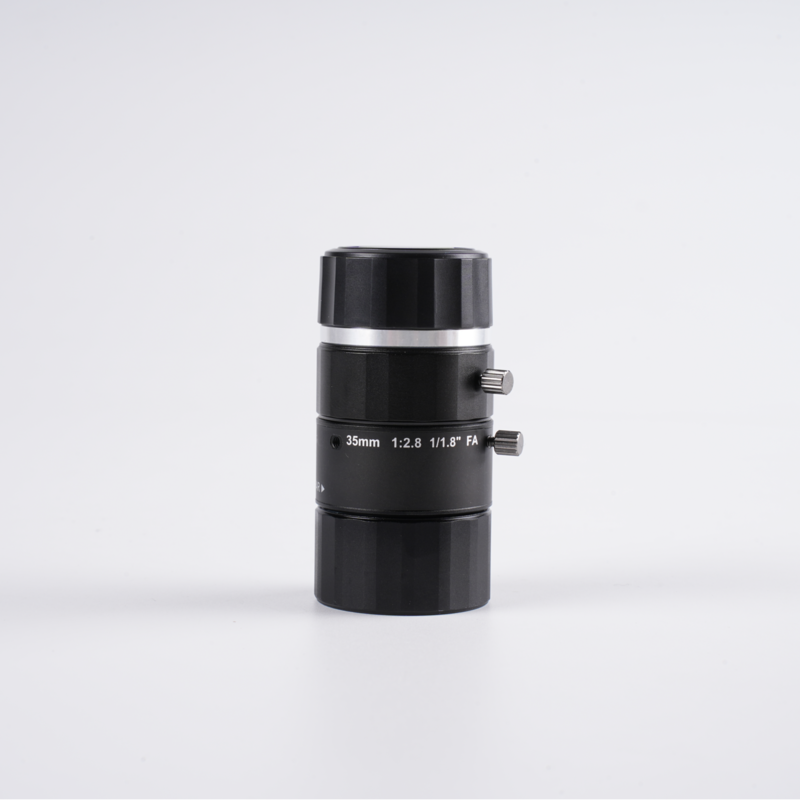Company News
Choosing the Right Lens for Machine Vision Applications: A Comprehensive Guide
Introduction
In the world of machine vision, choosing the right lens is critical for achieving optimal performance and accuracy. With a wide array of lens options available, understanding their characteristics and capabilities is essential. This article serves as a comprehensive guide to help users navigate through the industrial lens options for machine vision success.
1. Understanding Lens Types

A) Fixed Focal Length Lenses:
Fixed focal length lenses have a fixed distance between the lens and the sensor, providing a fixed field of view. They offer excellent image quality and are suitable for applications that require consistent working distances. Different focal lengths are available to accommodate various scene sizes and working distances.
B) Varifocal Lenses:
Varifocal lenses allow users to manually adjust the focal length, providing flexibility in achieving desired magnification levels and field of view. These lenses are ideal for applications where the distance between the lens and the object being imaged may vary.
C) Zoom Lenses:
Zoom lenses offer adjustable focal lengths with motorized control, allowing users to change magnification levels and field of view remotely. They are perfect for applications that require frequent adjustment of object distances or imaging requirements.
2. Factors to Consider when Selecting a Lens
A) Resolution:
The lens must be capable of resolving details at the desired level to ensure accurate image analysis. The resolution depends on the lens quality, pixel size of the sensor, and the desired field of view.
B) Working Distance:
The desired working distance determines the lens focal length. It is crucial to choose a lens that can maintain focus within the desired working range.
C) Field of View:
The lens should provide the appropriate field of view to capture the required scene size. It is determined by both the lens focal length and the sensor size.
D) Aperture:
The lens aperture affects the amount of light reaching the sensor. It influences the image's brightness, depth of field, and overall image quality. Selecting the correct aperture is crucial for capturing clear and accurate images.
3. Lens Coatings and Filters
Lens coatings and filters are essential for enhancing image quality and reducing unwanted reflections. Anti-reflective coatings minimize flare and ghosting, improving contrast and clarity. Filters such as polarizers, UV filters, and neutral density filters further enhance image quality by reducing glare and adjusting light levels.
4. Specialized Lens Options
A) Telecentric Lenses:
Telecentric lenses offer distortion-free imaging and consistent magnification across the entire field of view. They are commonly used in measurement and inspection applications that require accurate dimensional analysis.
B) Macro Lenses:
Macro lenses are designed for close-up imaging of small objects with high magnification. They are ideal for applications like PCB soldering inspection and small parts measurements.
C) Infrared Lenses:
Infrared lenses are used in applications that require imaging in the infrared spectrum, commonly found in night vision, thermal imaging, and certain scientific research applications.
Conclusion
In summary, selecting the right lens for machine vision is crucial for achieving accurate and reliable results. Consider factors such as focal length, resolution, working distance, and lens coatings when making a decision. Assess your specific application requirements and consult with industry experts to choose the most suitable lens for your machine vision system. By understanding the lens options available and their respective capabilities, you can navigate the complex landscape of industrial lenses and achieve machine vision success.
 English
English  German
German Japanese
Japanese Korean
Korean Vietnamese
Vietnamese French
French Spanish
Spanish भारत
भारत



